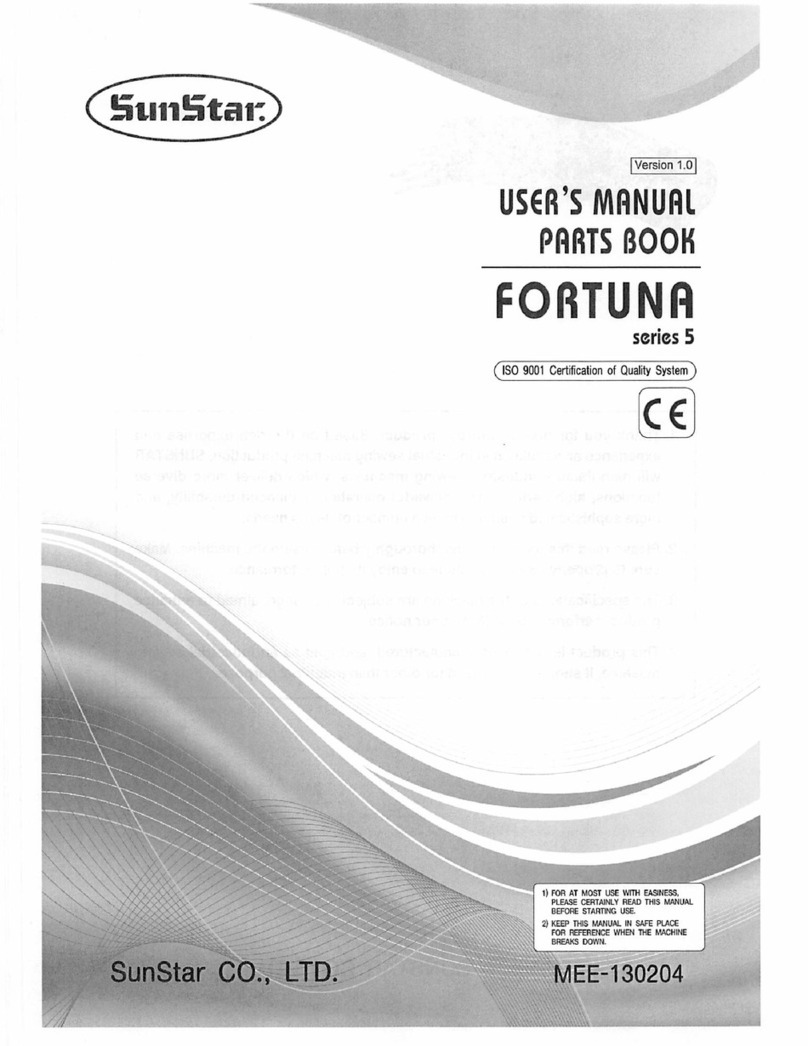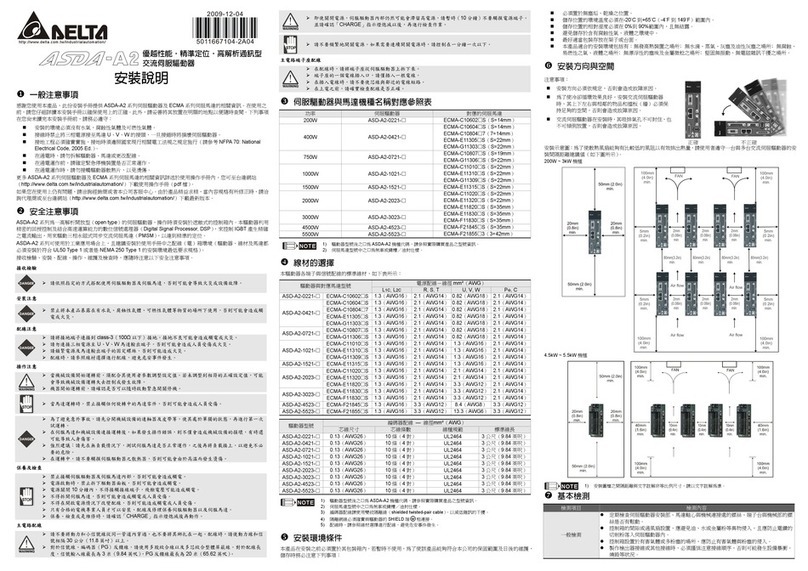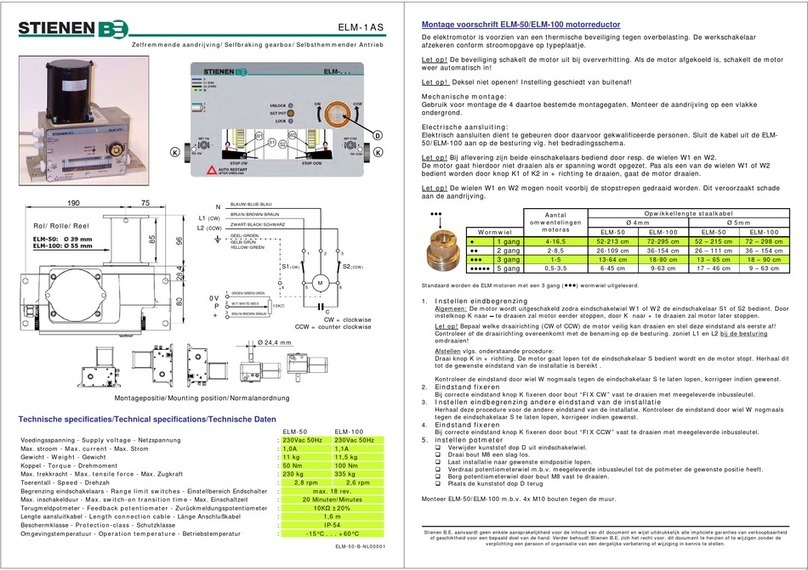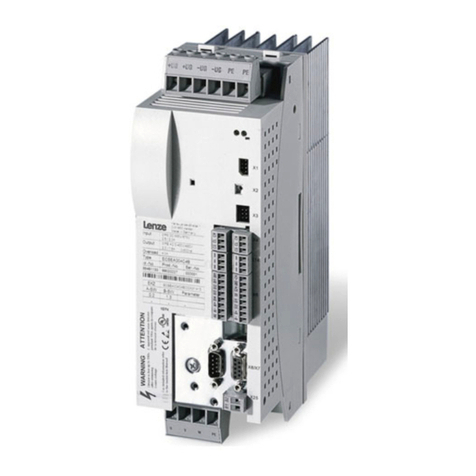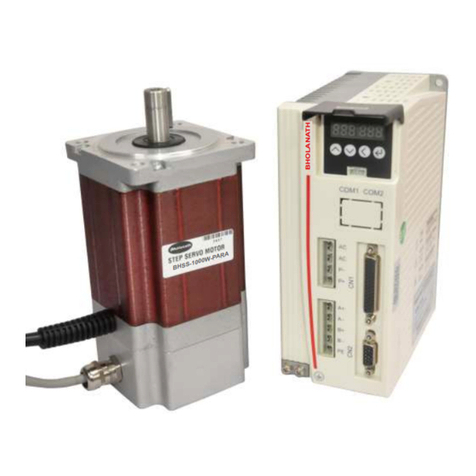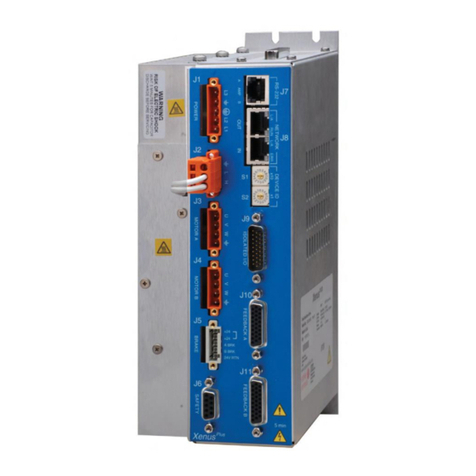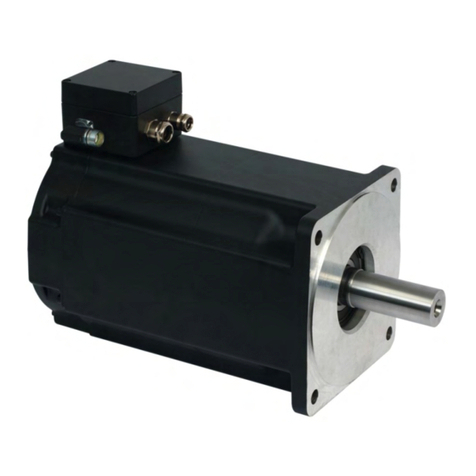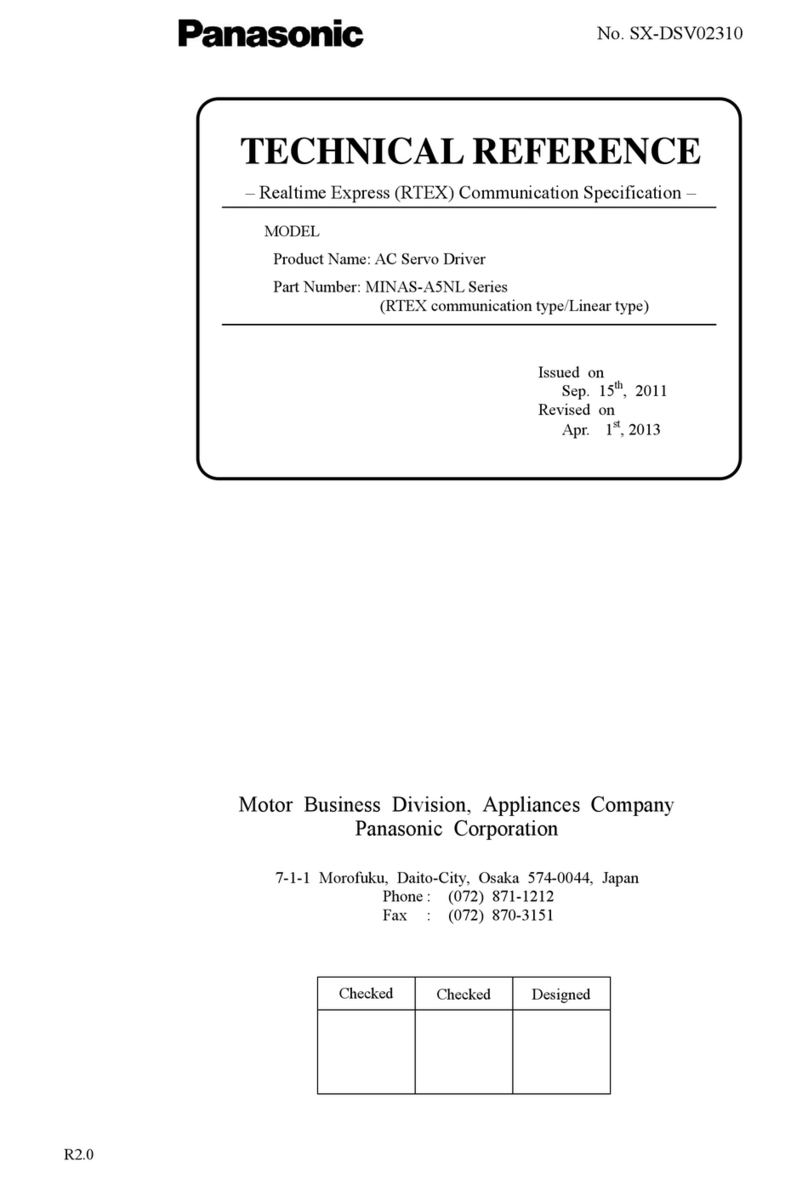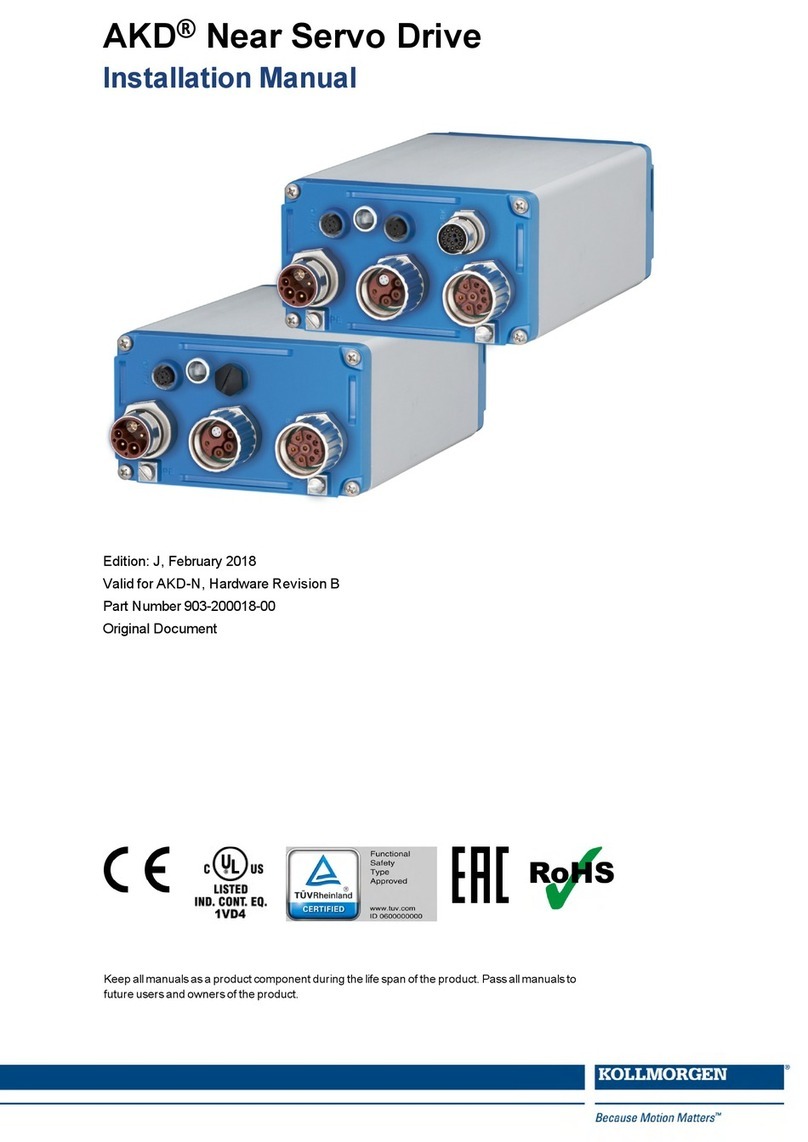FIAMA SERVO3M Operating instructions

Positioning unit
Date: 08/02/21 File: Servo3M_M12_ing.doc page 1/8
SERVO3M USER AND MAINTENANCE MANUAL

Positioning unit
Date: 08/02/21 File: Servo3M_M12_ing.doc page 2/8
Manual purpose
This manual has been designed by the manufacturer to provide the necessary information regarding the
SERVO unit to those who are authorized to carry out safely its installation, maintenance, removal and
disposal. All the necessary information for the buyers and planners can be found in the sales documentation.
In addition to adopting good technical construction methods, the information should be read carefully and
strictly applied. Inobservance of this information could cause risks for the health and safety of people and
equipment damage. This information, provided by the manufacturer in the original language (Italian) is also
available in other languages to satisfy legislative and/or commercial needs. A responsible person must keep
this manual in an ideal place in good conditions so that it is always available for consultation. In case this
manual is lost or deteriorates, a replacement should be requested directly from the manufacturer indicating
the product part number. This manual reflects the features of the instrument at the time of input on the
market: however the manufacturer reserves the right to make changes, add or improve the manual without
giving any reason to hold the present manual inadequate.
Identification of the equipment
The identification plate is applied on the instrument.
To find out the identification code of the instrument, consult the sales documentation.
Environmental conditions
Temperature setting: min 0°C – max + 50°C.
It is forbidden to use the instrument other than its specific use and in potentially explosive conditions or where
anti-explosive elements are necessary.
Storage
Here below are some references to be followed for the storage of the device.
Avoid environments with excessive humidity and those exposed to harsh weather (avoid open areas). Avoid
putting the instrument directly on the ground. Store the instrument in its original packing.
Conformity declaration and EC marking
The instrument answers to the following Communitarian Directives:
2014/30/EU Electromagnetic compatibility, 2011/65/EU RoHS
Maintenance
The instrument does not need a particular maintenance except cleaning to be done only with a soft cloth
dampened with ethyl alcohol or water. Do not use hydrocarbon solvents (petrol, thinners, etc.): the using of
these products could affect the proper functioning of the instrument.
Repairs should be done only and exclusively at the FIAMA technical assistance centre.
Assistance request procedure
For any kind of technical assistance request, contact the sales department of the Manufacturer directly
indicating the information given on the identification plate, the number of hours used and the type of defect.
Manufacturer’s responsibility
The manufacturer declines any responsibility in case of:
• Using the instrument contrary to the national safety and accident-prevention laws.
• Incorrect installation, inobservance or incorrectly followed procedures provided in the present manual.
• Defective electrical power supply.
• Modifications or tampering.
• Operations carried out by untrained or unqualified staff.
The safety of the instrument also depends on the strict observance of the procedures indicated in the
manual: always operate the instrument in its functioning capacity and carry out a careful routine maintenance.
• All phases of inspection and maintenance must be done by qualified staff.
• The configurations detailed in the manual are the only ones permitted.
• Do not try to use it anyway contrary to the indications provided.
• The instructions in this manual do not substitute but fulfill the obligations of the current legislation regarding
the safety laws.

Positioning unit
Date: 08/02/21 File: Servo3M_M12_ing.doc page 3/8
Description
The SERVO.M positioning unit comprises a DC geared motor with microprocessor control of the drive gear
and an incremental position transducer (encoder) or absolute position transducer (precision potentiometer)
connected to the output shaft with interface for field bus and display with 5 digits. It creates, in a single
compact device, a complete system for axis control axis where the position to reach is communicated by bus
and a PID type controller is present. The SERVO.M-E version has a position transducer with an incremental
optical encoder, while the SERVO.M.P version has a precision potentiometer.
The SERVO.M unit has a hollow shaft output to enable a simple installation and a versatile use, even with
pre-existing manual motion machines that must be automated. Therefore it is suitable for a large number of
applications on machinery within industries such as printing, packaging, woodworking, marble, plastic, etc. A
simple linking and lay out are guaranteed by a supervisor (PC, PLC), the system interfaces with a bus-field to
control the positioning and enable the modifications of the control parameters (present value, speed, state).
The communication protocol can be MODBUS RTU, CANopen, PROFIBUS DP.
For electrical connection, the power-supply cable and the communications cables are separate: the standard
version of the SERVO.3M has 3 cable glands for input and output (2x PG9, 1x PG7); an M12-T connector is
available as option for power instead of the PG7 cable gland.
Installation
Before installing the instrument, read the following warnings:
a) Connect the instrument strictly following the instructions of the manual.
b) Carry out the connections using the correct wires within the limits of the tension and power supply as
indicated in the technical data.
c) The instrument does not have an ON/OFF switch, hence it comes on when connected to the power supply.
For safety reasons, the equipment connected permanently to the power supply requires a bi-phase selector
switch which should be within easy reach of the operator.
d) If the instrument is connected to any apparatus not isolated electrically, carry out an earth connection to
avoid it being connected directly through the structure of the machine.
e) It is the responsibility of the user to check, before using, the correct settings of the parameters of the
instrument to avoid damage to persons or equipment.
f) The instrument cannot function in a dangerous environment (inflammable or explosive). It can be
connected to elements that operate in the same atmosphere only through appropriate interfaces, according
to the current safety regulations.
g) Avoid dust, humidity, corrosive gases, heat sources.

Positioning unit
Date: 08/02/21 File: Servo3M_M12_ing.doc page 4/8
Power supply
a) Before connecting the unit, check that the power supply tension is within the permitted limits and that it
corresponds to the one indicated on the tag.
b) Carry out the electrical connections with the instrument disconnected.
c) For the power line to instruments and sensors, a power supply line separate from that of the power is
required : it is necessary to use an isolating transformer.
d) The power line should provide a device that separates the set fuses of the instruments and should not be
used to regulate relays, contactors, etc.
e) If the network tension is very disordered (ex. from the change-over of the power units, motors, inverters,
welders, etc.), use the appropriate filters of the network.
f) If an earth connection is needed, ensure that the plant has an adequate grounding system: tension
between neutral and earth <1V and the resistance <6 Ohm.
Gear motor assembly
Two M4 screws can be applied to the two M4x12 brass inserts: this is necessary in case the servo motor
must make many maneuvers or is used continuously.
The diameter Ø20 millimeter (50mm deep) hollow shaft is applied to the driving shaft of the machine.
Ensure that the hollow shaft is perpendicular to the support base.
Lock the hollow shaft onto the machine shaft using the M4 screw on the clamping ring.
Note: The gear motor does not have parts that need maintenance or oiling.
If necessary, protect the unit from: dust, water, collisions, extreme temperatures.
Manually turn the shaft of the reducer using the clamping ring (tightened on the hollow shaft)
only if necessary.
Do not exceed permitted torque.
Do not dismantle or open the unit, particularly the part of the reducer.
Do not pierce/modify the container or the hollow shaft.
POTENTIOMETRIC VERSION Before assembling the SERVO, it is fundamental to place the shaft of the
machine and the shaft of the SERVO in the correct position, for example half way or towards the end, in a
way that there is correlation between the position of the SERVO and that of the machine. To do that, the
motion of the hollow shaft of the SERVO should be serially commanded by the control unit (PLC, PC, etc): do
not rotate the shaft by hand.
The calculation of the number of turns that the hollow shaft has to complete to achieve the total motion of the
machine is determined by multiplying the reduction ratio of the reducer of the potentiometer by the number of
turns of the potentiometer itself (total reduction ratio = R).
In case that the maximum number of allowed rotations by the shaft is exceeded, a mechanical clutch
intervenes to safeguard the potentiometer transducer.
Note: the SERVO is provided with the hollow shaft and the potentiometer positioned half way.
ELECTRICAL CONNECTION
Disconnect from power supply before connecting/disconnecting the equipment/machinery.
The connecting cables must be kept separate from the power lines or from electromagnetic
interference sources.
Pay careful attention to the electrical connections: any failure caused by a faulty connection
will render the guarantee null and void.
The power supply must be in the permitted range, a higher range could damage the
equipment.
Remove the 3 closing screws of the cover to access the terminal box.
Carry out the connections according to the following figure:

Positioning unit
Date: 08/02/21 File: Servo3M_M12_ing.doc page 5/8
PROFIBUS VERSION
B1÷B2 = PROFIBUS B line
A1÷A2 = PROFIBUS A line
MODBUS VERSION
B1÷B2 = + RS485
A1÷A2 = - RS485
CANopen VERSION
MALE FEMALE
M12x1 CANOPEN CONNECTOR
1 not connected
2 not connected
3 = CAN_GND
4 = CAN_H
5 = CAN_L B1÷B2 = CAN_L
A1÷A2 = CAN_H
COM = CAN_GND
1
1
2
34
1
2
34
1
55
MALE FEMALE
M12x1 PROFIBUS
1 = not connected
2 = PROFIBUS A
3 = not connected
4 = PROFIBUS B
2
34
1
2
34
1
55
MALE FEMALE
M12x1 PROFIBUS
1 = not connected
2 = – RS485
3 = not connected
4 = + RS485
2
34
1
2
34
1
55

Positioning unit
Date: 08/02/21 File: Servo3M_M12_ing.doc page 6/8
POWER SUPPLY +24VDC
Power supply terminal board
TERMINAL
BOARD CONNECTION
+24V power supply
-GND power supply
Power connector
M12-T male as viewed externally with exit shaft directed downwards
M12T PIN
CONNECTOR
WIRE
COLOR CONNECTION
1 BROWN +24V POWER SUPPLY
2 WHITE NOT CONNECTED
3 BLUE GND POWER SUPPLY
4 BLACK NOT CONNECTED
SETTINGS OF ADDRESS AND BAUD RATE
Before setting SERVO it is necessary to set the address and baud rate of device using dip-switch S1 and S2
as showed in the following table according to the model of SERVO used.
If the SERVO is the last node of net, set at ON the dip-switch S3 (both switches 1 and 2 at ON).
IMPORTANT: during this phase it is advisable to pay close attention to not damage the dip-switch and the
electronic components on the board. It is strictly forbidden to take off the card of its case.
Assemble the wiring clip jumper to assure the continuity of shield mostly for the Profibus cables.
2
3
1
4

Positioning unit
Date: 08/02/21 File: Servo3M_M12_ing.doc page 7/8
Setting of device address and serial communication speed – MODBUS protocol
The setting of baud rate is made by the dip-switch S1 (set in factory at 19200) and that of the address with
dip-switch S2 (se in factory at 1). Valid addresses are from 1 to 247.
By changing of address or baud rate is necessary to switch off and turn on the Servo.
Setting of device address – PROFIBUS protocol
The setting of address is made by dip-switch S2 (set at factory at 1). Valid addresses from 1 to 127. The
speed is measured automatically.
Setting of device address – CANopen protocol
The setting of address is made by dip-switch 1-7 of S2. Valid addresses from 1 to 127.
The setting of baud rate is made by il dip-switch 8 di S2 and the 2 dip-switch of S1.
By changing of address or baud rate is necessary to switch off and turn on the Servo.
S2
12345678
ON OFF OFF OFF OFF OFF OFF OFF 1
OFF ON OFF OFF OFF OFF OFF OFF 2
ON ON OFF OFF OFF OFF OFF OFF 3
OFF OFF ON OFF OFF OFF OFF OFF 4
etc…… etc……
S2
12345678
ADDRESS
ON OFF OFF OFF OFF OFF OFF OFF 1
OFF ON OFF OFF OFF OFF OFF OFF 2
ON ON OFF OFF OFF OFF OFF OFF 3
OFF OFF ON OFF OFF OFF OFF OFF 4
etc…… etc……
S1
12
BAUD RATE
OFF OFF 2400
ON OFF 4800
OFF ON 9600
ON ON 19200
S2 S1 BAUD RATE
(Kbaud)
812
OFF OFF OFF 1000
OFF ON OFF 1000
OFF OFF ON 800
OFF ON ON 500
ON OFF OFF 250
ON ON OFF 125
ON OFF ON 50
ON ON ON 20
S2
12345678
INDIRIZZO
ON OFF OFF OFF OFF OFF OFF -1
OFF ON OFF OFF OFF OFF OFF -2
ON ON OFF OFF OFF OFF OFF -3
OFF OFF ON OFF OFF OFF OFF -4
ecc…… ecc……

Positioning unit
Date: 08/02/21 File: Servo3M_M12_ing.doc page 8/8
Technical characteristics
Motor permanent magnet DC power, 70W (150W max)
Power supply 24VDC ±20%, 2,5A (6,5A max)
Hollow shaft Ø20mm H7, depth 50mm
50/1 max 115RPM (8Nm @ 70RPM non continuous)Gear motor reduction ratio
75/1 max 75RPM (12Nm @ 45RPM non continuous)
Encoder (SERVO E)incremental optical encoder on output shaft
Resolution 1000 impulses/turn
Potentiometer (SERVO P)Precision potentiometer transducer
Resolution 16000 points
Number of turns/ linearity 340°/1% - 3 turns /0,25% - 5 turns /0,25% - 10 turns /0,15%
Potentiometer reducer reductions 1/1; 3,3/1; 10/1; 24/1; 30/1; 90/1, others on request
Electrical connection 4 poles terminal board supply, 4 poles terminal board field-bus,
max 1,5mm2
Connections 1x PG7 cable gland for supply (cable Ø 3 - 6mm) or 1x optional
M12-T connector for power supply
2x PG9 cable glands for field-bus (cable Ø 5 - 8mm)
Weight 1100g
Protection level IP54
Working temperature 0-60°C
Humidity 10-85%
Directive: 2014/30/EU Electromagnetic compatibility, 2011/65/EU RoHS
Manufacturer
All communications to the manufacturer should be addressed to:
FIAMA s.r.l., Via G. Di Vittorio, 5/A - 43016 San Pancrazio (Parma) - Italy
Tel. +39 0521.672.341 - Fax. +39 0521.672.537 – e-mail: info@fiama.it - www.fiama.it
FIAMA srl is not responsible for any damage to persons or things caused by tampering and improper
use and in any case that is not compatible with the features of the instrument.
Table of contents
Popular Servo Drive manuals by other brands
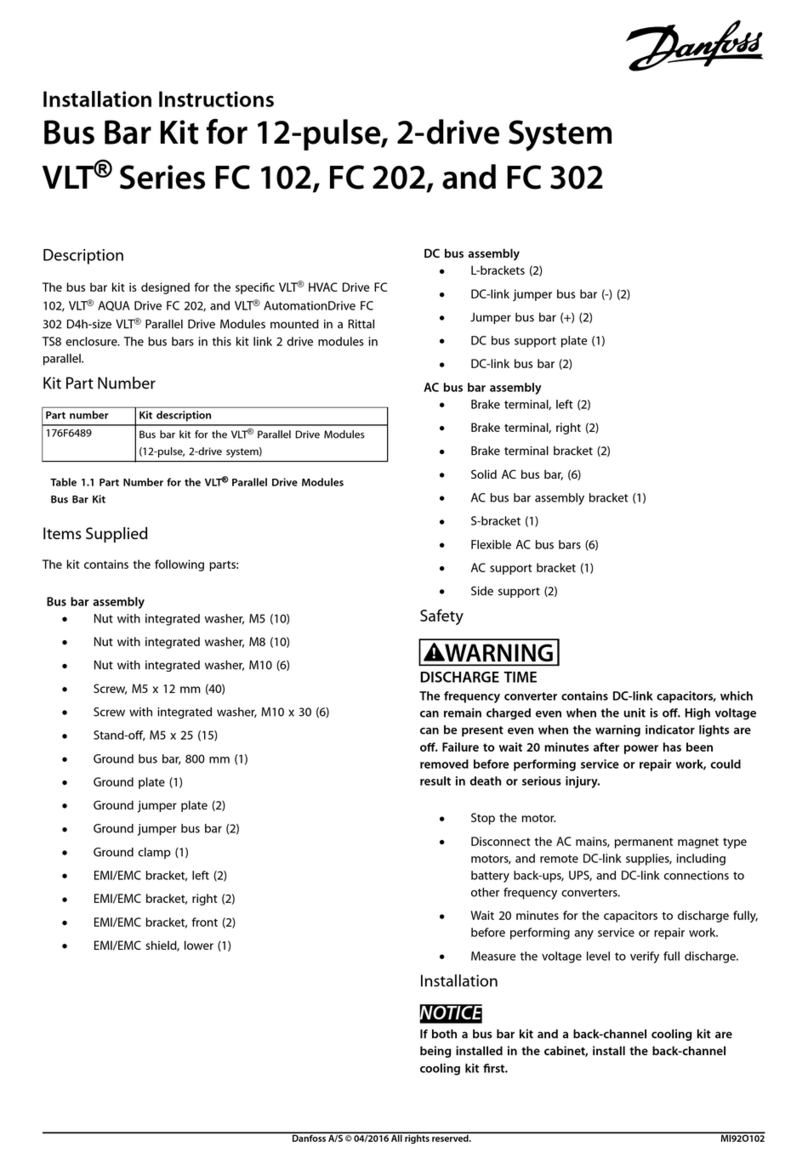
Danfoss
Danfoss 176F6489 installation instructions
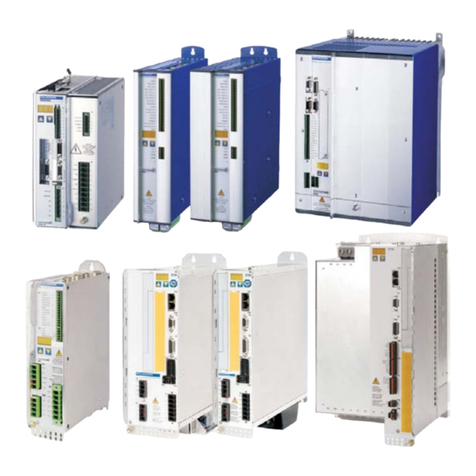
Kollmorgen
Kollmorgen SERVOSTAR S300 Translation of the original manual
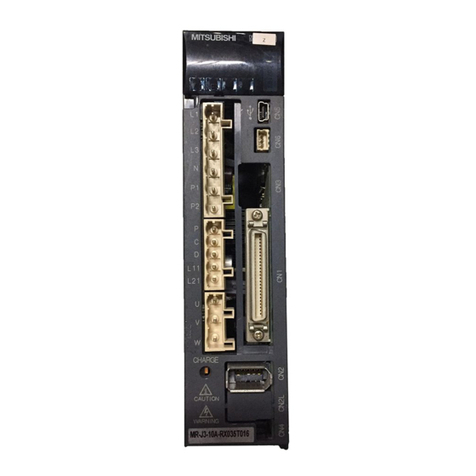
Mitsubishi Electric
Mitsubishi Electric Melservo-J3 Series MR-J3-B Handbook

Beckhoff
Beckhoff AMP8000 operating instructions

Parker
Parker Compax3 I10T10 operating instructions
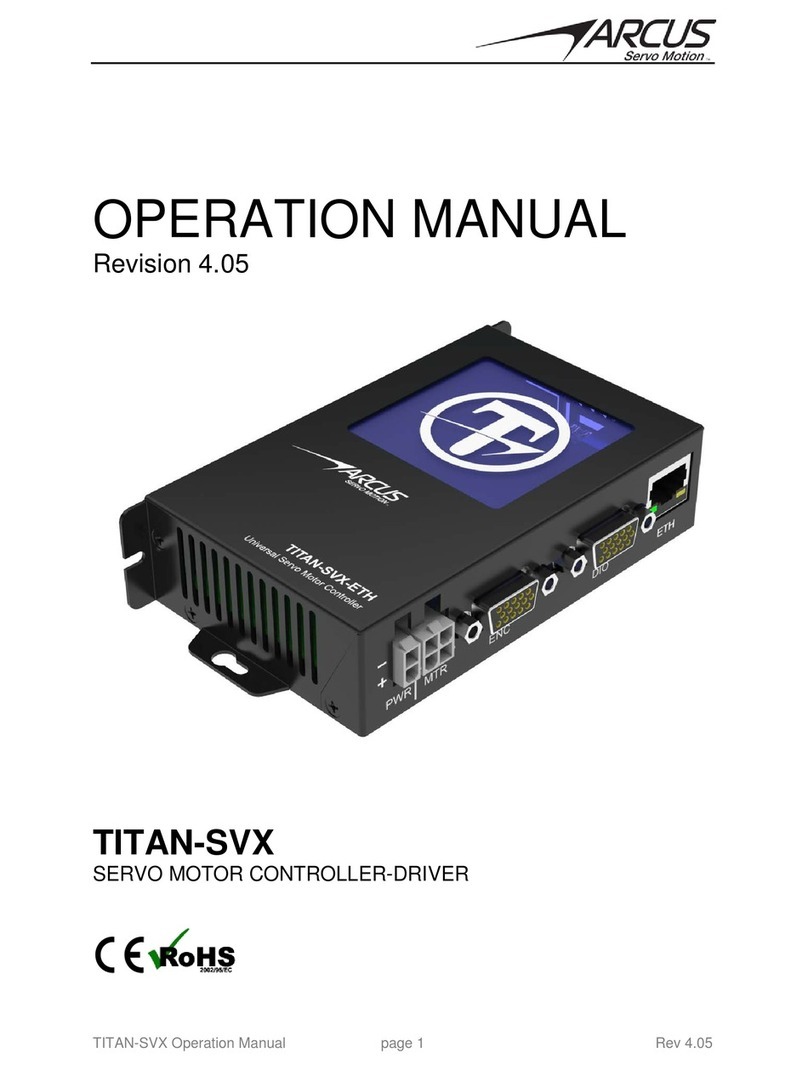
Arcus
Arcus TITAN-SVX Operation manual

